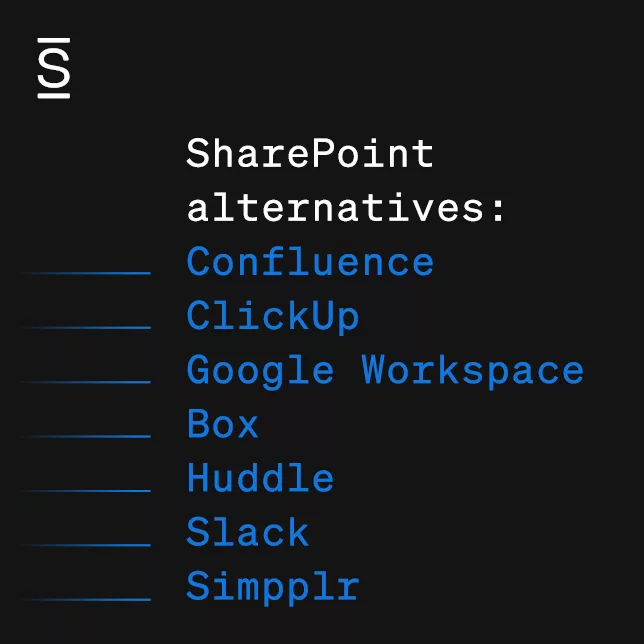Looking for alternatives to Microsoft SharePoint intranet? We’ve compiled a list of seven top-rated options that can replace SharePoint’s tools for knowledge management, content management, collaboration, communication, or all of the above.
Exploring SharePoint alternatives
So, what are the alternatives to Microsoft SharePoint? And how do you know what to look for? That depends on what you’re hoping to accomplish. The following SharePoint alternatives all have something to offer. Whether or not they would be a good fit simply depends on what you need.
Qualities to look for in a SharePoint alternative
If you’re contemplating a switch from SharePoint, the question isn’t necessarily what specific features you need in an alternative solution. It’s more a matter of what will integrate with the tools you already have—and what can be deployed quickly and easily without custom building—so you can spend fewer internal resources building and maintaining a custom solution. When comparing prices, take a full measure of the hours IT spends today on custom work, intranet-related IT tickets, and routine intranet maintenance.
Microsoft SharePoint alternatives and competitors
In no particular order, here are our seven top-rated SharePoint intranet alternatives:
1. Simpplr
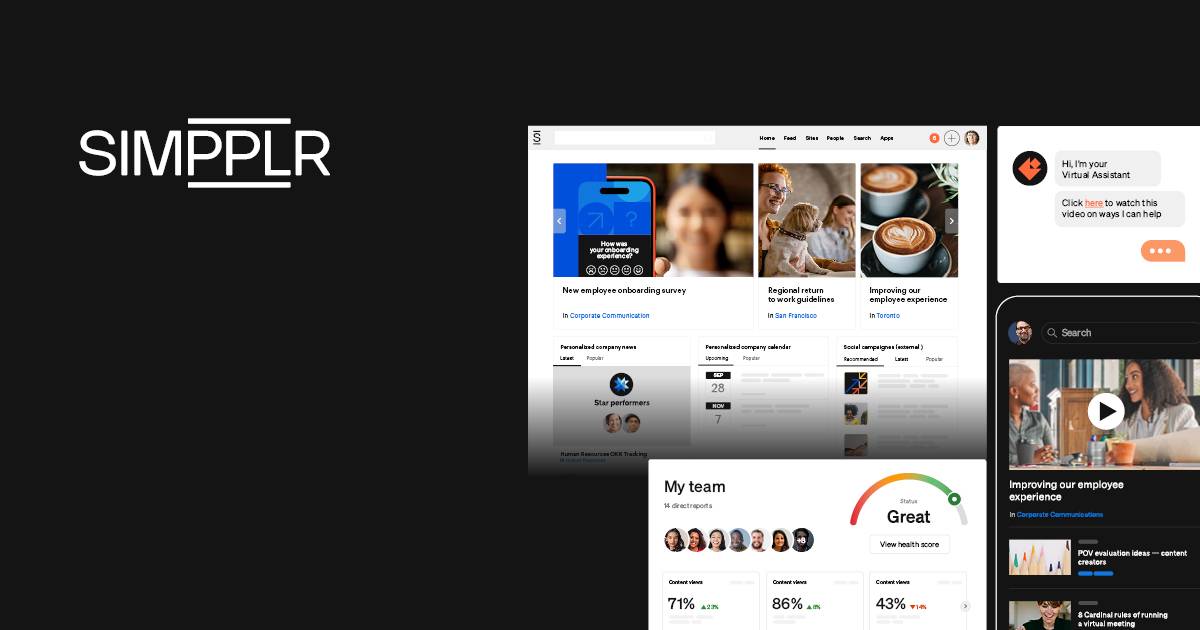
One of the best alternatives to SharePoint is Simpplr. A modern, AI-powered intranet and employee experience platform that helps companies centralize their resources, foster collaboration, and keep teams connected—includes configurable tools and features such as task management, employee profiles, news feeds, polls, and calendars.

Pros:
- A complete intranet solution with excellent scalability
- Offers 200+ out-of-the-box integrations, so companies that have been using digital tools don’t need to switch
- Provides a “front door” for the digital workplace, acting as a clean, organized portal for integrated tools and solutions, company news, HR tools, social networking, and more
- Simpplr’s content management and governance workflows keep content fresh and accessible in one place
Cons:
- Best for larger organizations (500+ employees)
- If a company has truly unique needs that must be met with a custom solution, building an intranet rather than buying it may be the way to go—but only if the organization can be sure that the added costs of time and internal resources merit that choice
2. Confluence
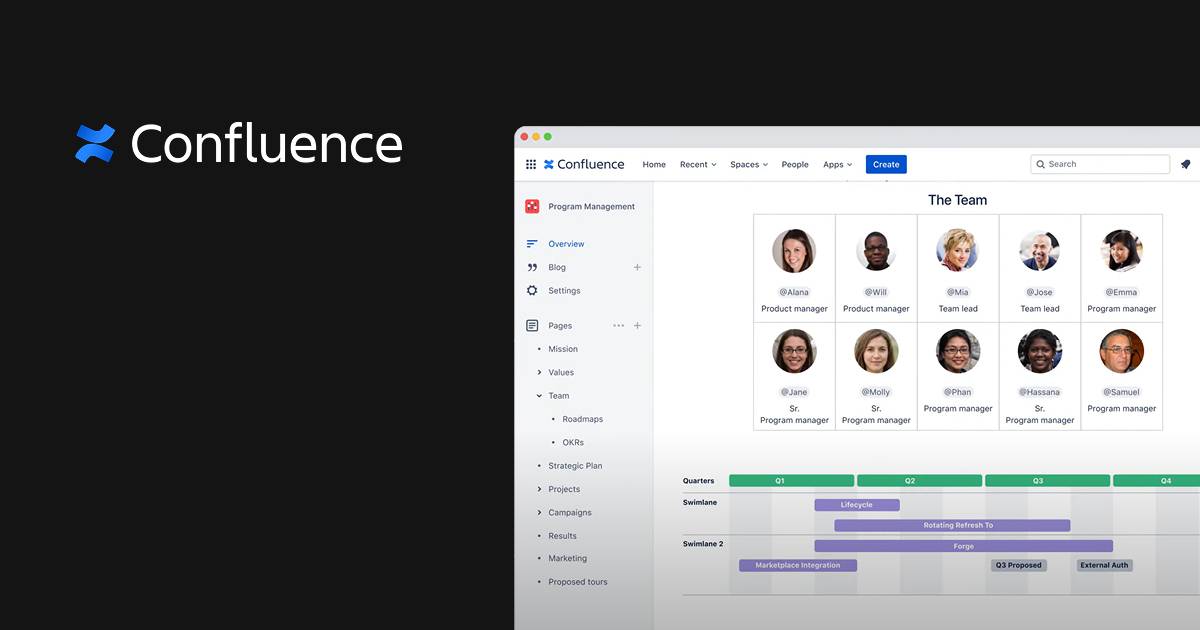
Confluence is a collaborative knowledge management software that lets users create, organize, and share content, such as documents, meeting notes, project plans, and more.
Pros:
- Offers a centralized platform for collaborative work
- An organized, structured space for knowledge sharing and documentation
- Integration with other tools and software, such as Jira for project management
- Customizable templates and macros for consistent, professional-looking content
- Robust permission settings to control who can access, edit, and create content
Cons:
- Confluence software can be expensive, especially for smaller businesses
- The learning curve for less tech-savvy users might be steep
- Can be challenging to maintain as content grows over time
- Configuring and customizing Confluence may require technical expertise
3. ClickUp
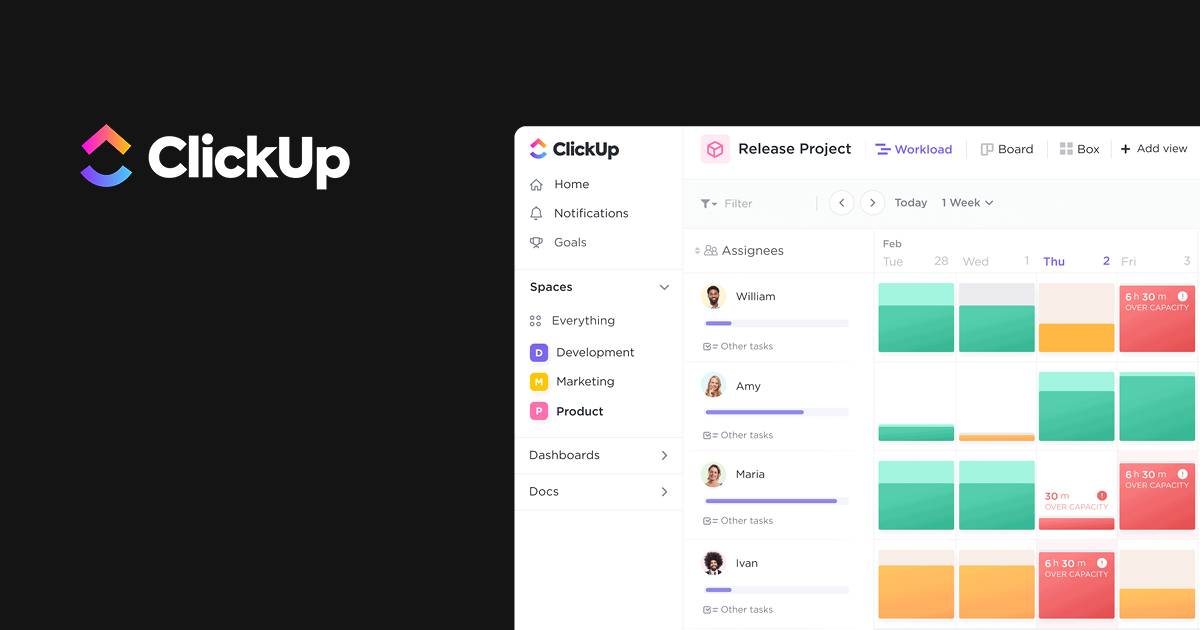
A project management and productivity tool that helps users organize tasks, collaborate, track progress, and streamline workflow processes.
Pros:
- Effective task management tools with notably customizable views
- Efficient time tracking and reporting
- Integrates with popular communication tools
Cons:
- Can have a steep learning curve for new users
- May be too complex for basic needs, with a potential for information overload
- Can slow down when implemented at scale
4. Google Workspace
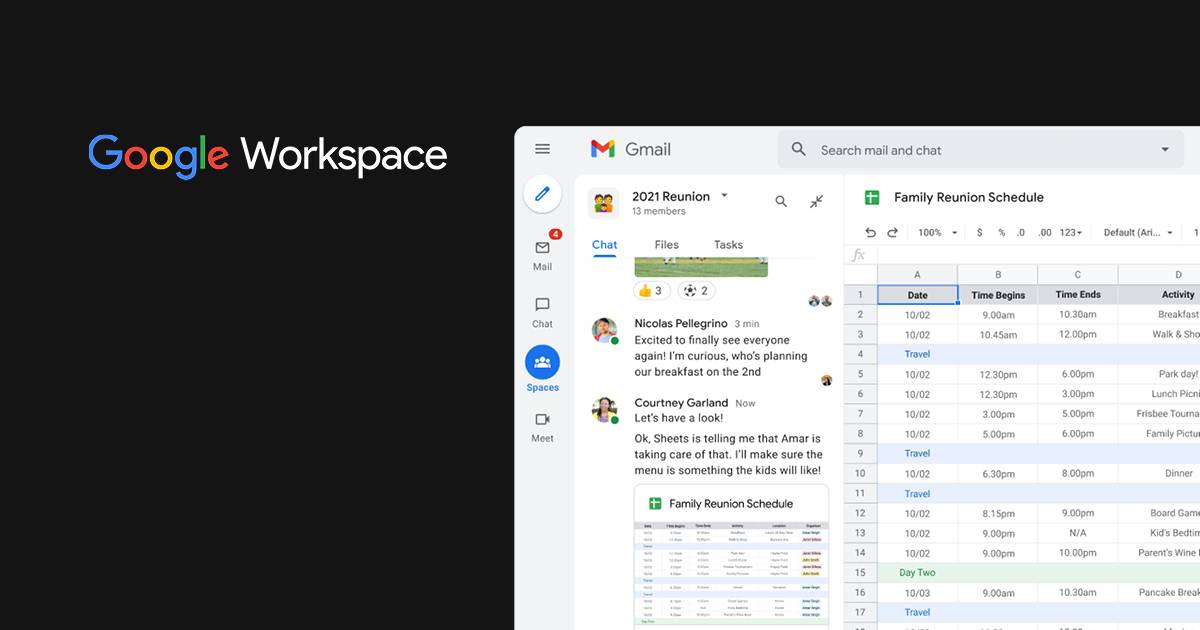
A cloud-based productivity suite that includes Gmail, Google Drive, Google Docs, Google Sheets, Google Slides, Google Calendar, and more for collaboration, communication, and productivity.
Pros:
- Excellent for real-time or asynchronous collaborative work
- Cloud-based storage lets teams work from anywhere, even on mobile devices
- Strong scalability
Cons:
- Does not include as many feature options as some other tools
- Some niche publishing solutions integrate more cleanly with Microsoft Word
5. Box
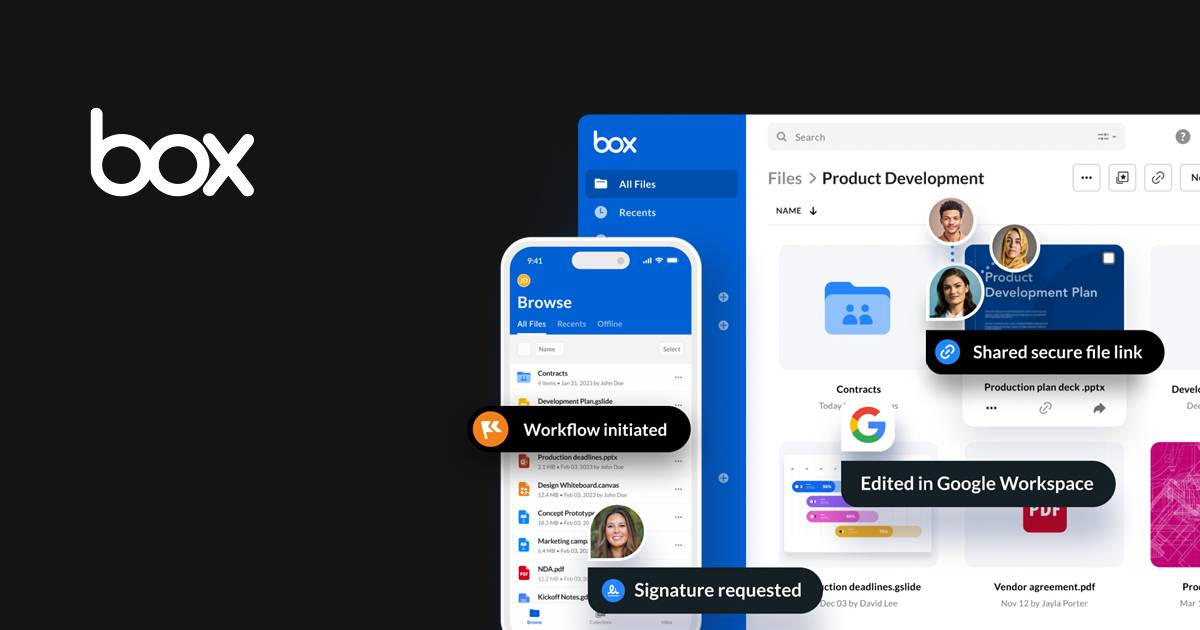
A cloud-based platform for the storage and sharing of content and other unstructured data.
Pros:
- Excellent for file sharing and file storage
- Keeps track of all versions of stored documents and retains previous ones
- Rated well by users for performance and reliability
Cons:
- Users rate it below average for simultaneous editing
- Users rate it slightly below average for searchability
6. Jostle
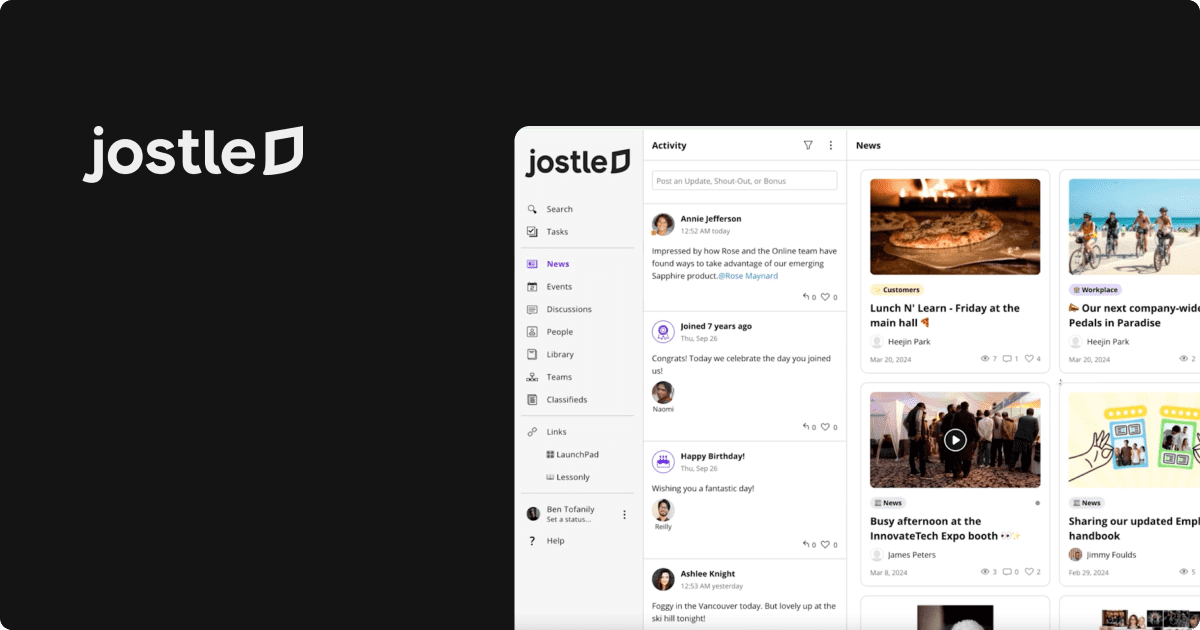
An employee success platform designed to improve internal communication, collaboration, and engagement within organizations. Includes features such as news updates, discussion forums, employee directories, event coordination, and more.
Pros:
- Post shout-outs to acknowledge colleagues for their outstanding work
- Publishes content and routes it to the appropriate channels and employees
- Stream video content to monitors throughout your office via JostleTV
Cons:
- The user interface may feel cluttered, making navigation less intuitive for some users
- Limited customization options can restrict the platform’s adaptability to meet specific organizational need
7. Huddle
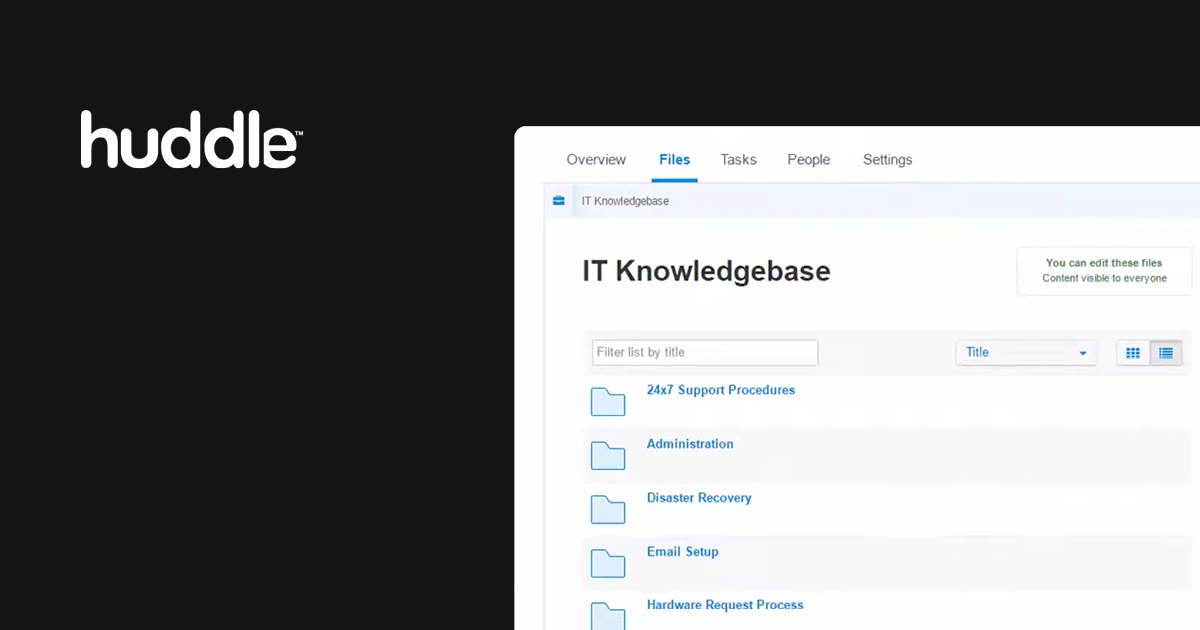
A platform for external collaboration that brings teams or groups together virtually to work on projects, share information, and communicate—features include document sharing, task management, video conferencing, and messaging.
Pros:
- User-friendly interface
- File sharing and communication with advanced security features
- Designed specifically for regulated industries
Cons:
- Can be a steep learning curve for new users and employees
- Advanced security and compliance assurance may not be necessary for all companies
- May not offer all the features or customization options to meet specific team needs
8. Slack
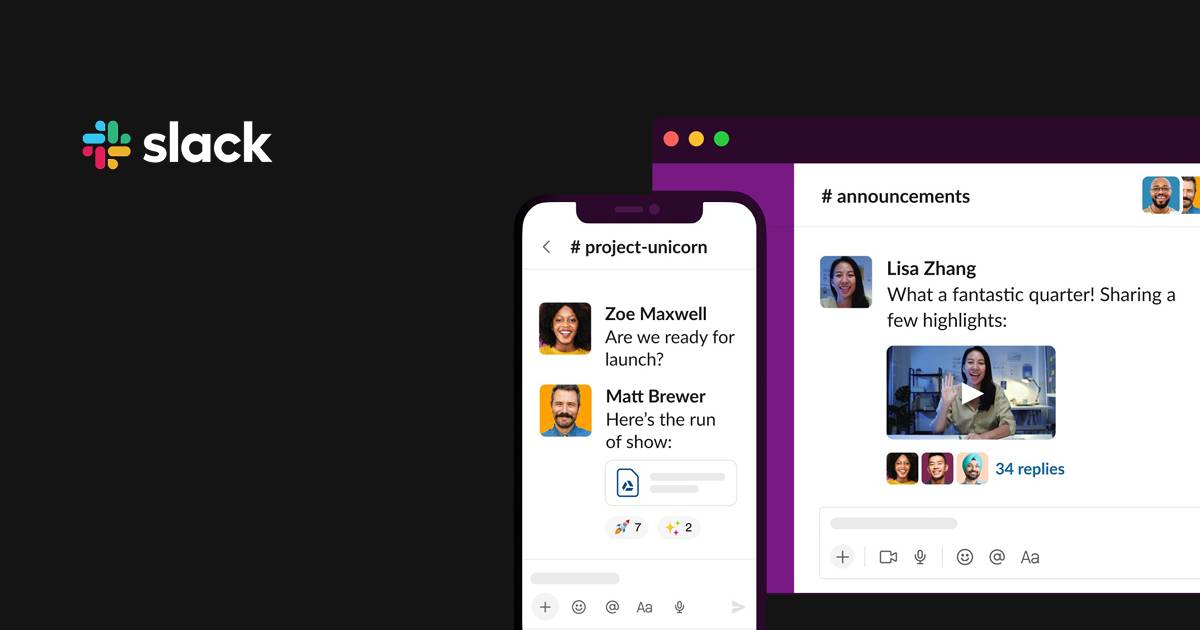
A cloud-based collaboration tool that helps teams communicate, share files, and collaborate in real-time, with user-created channels for specific topics or projects, direct messages, and various integrations with other tools and platforms.
Pros:
- User-friendly and easy to navigate
- Quicken and efficient communication with strong searchability
- Offers a wide range of integrations
Cons:
- The number of channels and DM lists can be overwhelming without strong governance
- If employees are expected to answer all Slack messages immediately, switching back and forth between tasks and messaging can cause severe inefficiencies
9. Workvivo
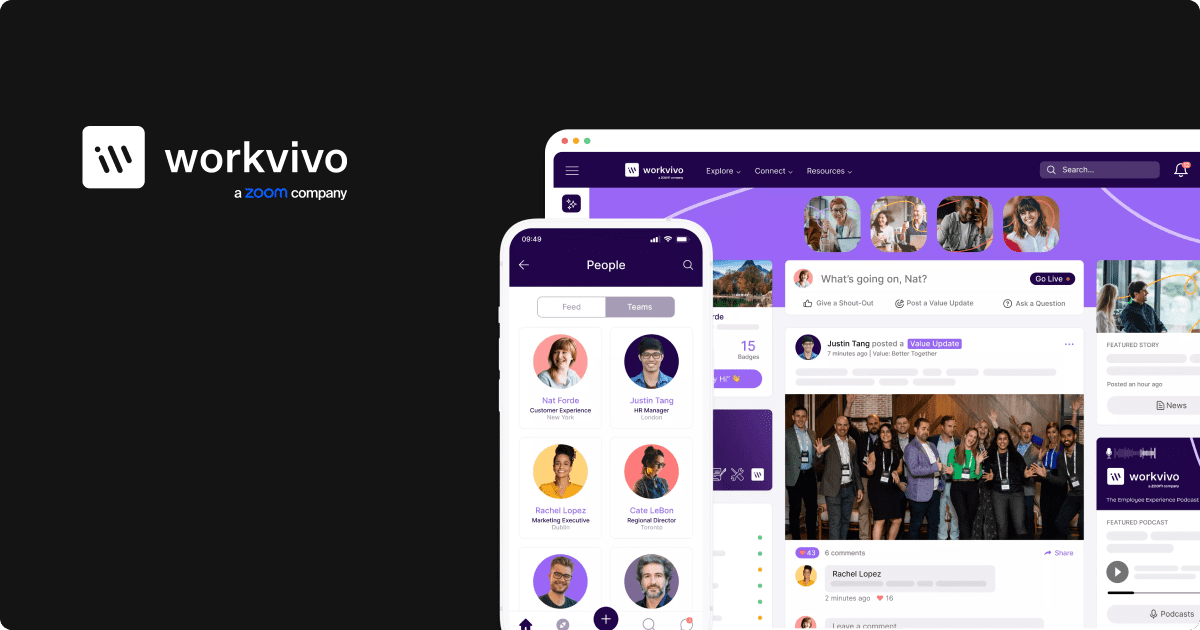
Workvivo is a comprehensive employee experience platform that integrates internal communication, engagement, recognition, intranet functionality, and measurement tools into a single application.
Pros:
- Intuitive design and easy to set-up
- Strong social feed and collaboration space for effective employee communication
- Stores all corporate resources and content at one place
- Uses rich media like podcasts and live streaming to connect remote teams
Cons:
- Workvio platform lacks content management governance
- Lacks a strong integration ecosystem, offering fewer than 50 integrations
- Can impede the user’s ability to perform work-related tasks due to its social outlook
- May offer average personalization options in notifications and content recommendations due to lack of AI
Read a detailed comparison report on Simpplr vs Workvivo to get a better understanding.
10. Glasscubes
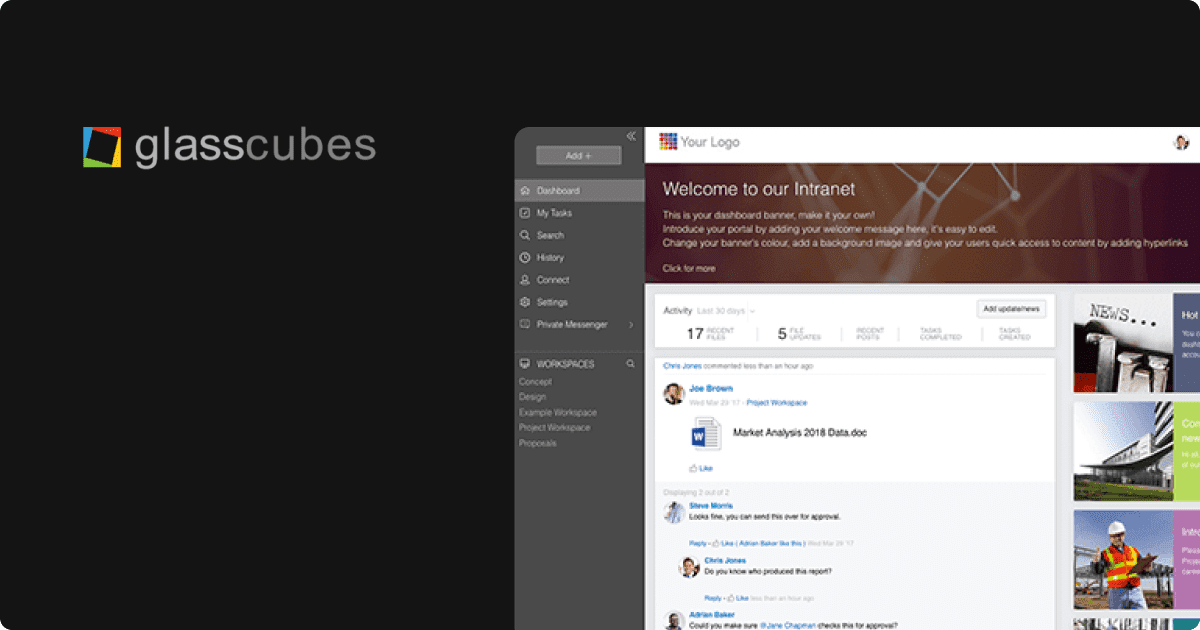
A collaborative platform designed to help teams and organizations manage projects, communicate, and share information efficiently. It primarily improves productivity by centralizing information and project management in one accessible location.
Pros:
- Simplicity, both in setup and usability
- Offers robust encryption for storing and accessing sensitive documents
- Glasscubes centralize work and create a focal point for companies
Cons:
- Might face scalability challenges, making it less suitable for large enterprises
- While it offers mobile access, the experience might not be as smooth or fully featured as the desktop version, potentially hindering productivity on the go.
Reasons to consider alternatives to SharePoint intranet
Enhanced business agility with a modern intranet
The truth is, modern intranet platforms like Simpplr really aren’t in direct competition with SharePoint. SharePoint is for organizations that believe building and maintaining a custom solution—and all the internal resources that requires—is the only way to solve their unique problems. For any organization that isn’t forced by circumstance to build a custom intranet, it’s simply easier and less expensive to buy it.
Effective intranet governance: Best practices for intranet management
Although intranet management often focuses on publishing new content, effective intranet governance is at least as much about updating and removing content, if not more so. An important best practice for successful intranet management is not to let intranet bloat take over. That means making sure that outdated information isn’t taking up digital storage space and leading people astray.
Simpplr’s intranet offers auto-governance, sending automatic reminders to content authors to update or delete old content and using the power of AI to keep your corporate intranet from slowly turning into a junk drawer.
Upgrade from Microsoft SharePoint to Simpplr
Ultimately, the question isn’t whether an organization needs SharePoint or Simpplr—it’s whether they want to implement an intranet solution by building it or buying it.
Simpplr lets companies deploy a modern, AI-powered intranet in a fraction of the time it would take to build a custom solution, and it requires far fewer internal resources to maintain over time. It also syncs right out of the box with the tools your employees use every day, keeping work organized and aligned in one integrated platform.
To see how Simpplr can save you time and money with an easy-to-deploy, easy-to-use, highly scalable intranet, check out a demo.
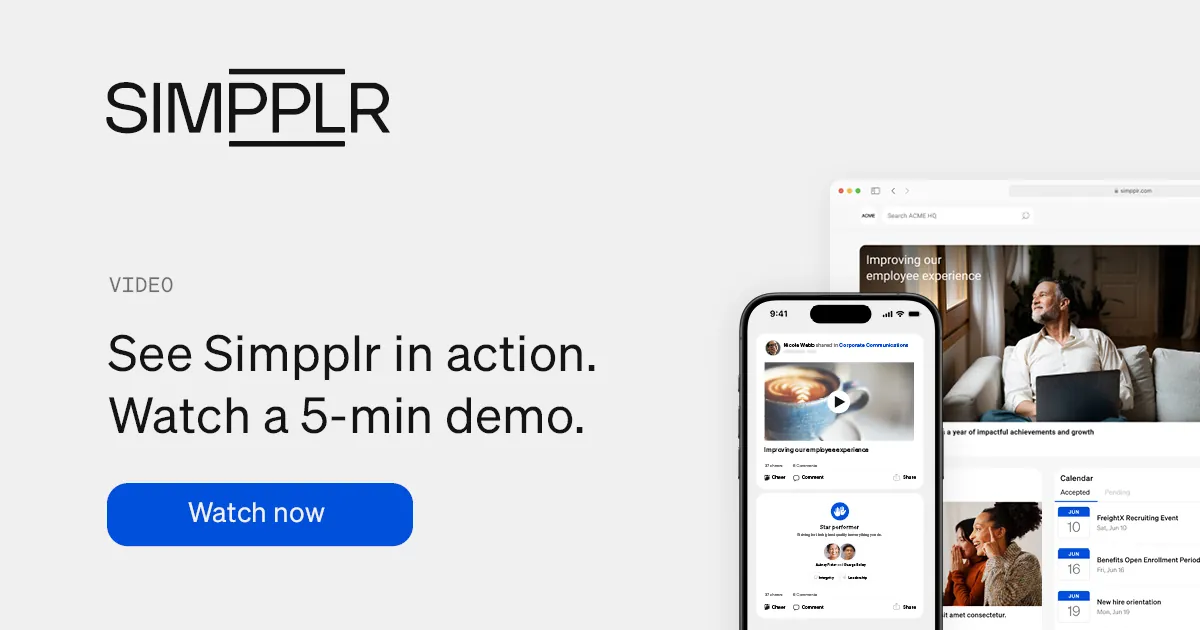
SharePoint alternatives FAQs
1. What is SharePoint?
SharePoint is a highly customizable cloud-based platform developed by Microsoft that facilitates content collaboration and management within organizations. It empowers teams to work remotely, enhances productivity, and supports seamless collaboration by allowing users to create, manage, and share documents and information efficiently.
2. What is a SharePoint intranet and how does it work?
Microsoft SharePoint intranet is a tool that lets companies create an internal, company-only network for collaboration and communication. Examples of SharePoint intranet features include document storage, task management, and team sites, among others. If you’re considering a SharePoint intranet, it comes in two varieties: SharePoint or SharePoint in Microsoft 365.
3. Why are businesses exploring alternatives to SharePoint?
For people who have spent their entire lives working with the Microsoft suite of products, the SharePoint eleven-point software bundle might at least feel like a familiar solution. But those Microsoft tools are designed to integrate best with each other, not with external applications. In a modern tech stack, that just isn’t realistic.
Companies today use many popular tools and solutions to cover a wide range of needs, and most modern businesses want to be free to change tools or upgrade to new services as needed. They aren’t looking for a one-stop shop where they can get everything—because that only gives them one option for each need.
What if a company wants to use Google for calendars and email, Slack for messaging, and Zoom for video conferencing? In the SharePoint universe, picking and choosing among different solutions for different problems just isn’t the model.
4. What are common challenges faced by SharePoint users?
The first and probably biggest drawback of Microsoft SharePoint is that it isn’t an intranet solution in and of itself. It’s a way to build an intranet—which takes a lot of time and work. Even once it’s built, that custom intranet solution will still take a lot of IT time and resources to support and maintain, so SharePoint solutions come with significant costs that aren’t immediately obvious.
Third-party review site G2 turned up a few more drawbacks to using SharePoint intranet. The initial rollout is reported to be time-consuming, with a rating of only 7.1 out of 10 for ease of setup, well below the average employee intranet rating of 8.6 on that same site.
Unfortunately, SharePoint’s usability rating doesn’t fare much better, with a rating of just 7.7 against an average of 8.7. Specific complaints included advanced features being difficult to use and a subpar user interface. The quality of Microsoft’s SharePoint support came in a bit stronger at 7.9, but that was still below the average of 8.8.
The SharePoint intranet homepage
In theory, the SharePoint intranet homepage serves as a centralized location to bring all those Microsoft tools together. In practice, however, the integrations take time to set up, and the individual tools are complex and time-consuming to learn. Plus, having bought a pre-packaged bundle of eleven software product subscriptions, companies can feel locked into all of them, unwilling to spend budget on other tools that might help employees be more productive and efficient.
The SharePoint intranet HR portal
Another challenge faced by SharePoint intranet users is the lack of native integrations with popular HR solutions. SharePoint lets you build your own HR system in SharePoint from the ground up using templates as a starting point, but given the power and complexity of today’s HR tech solutions, building your own system isn’t exactly optimal. If you want to use something like Workday instead, you can code a custom integration for external software using API calls, but that takes a lot of technical know-how.







